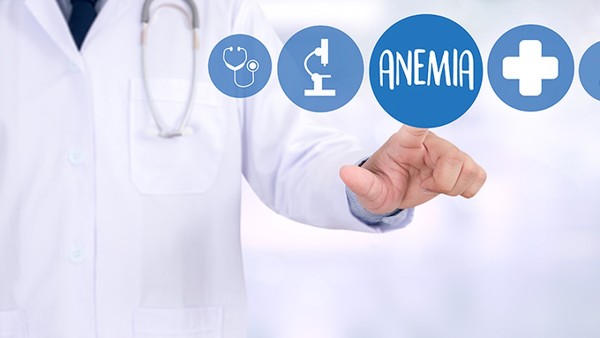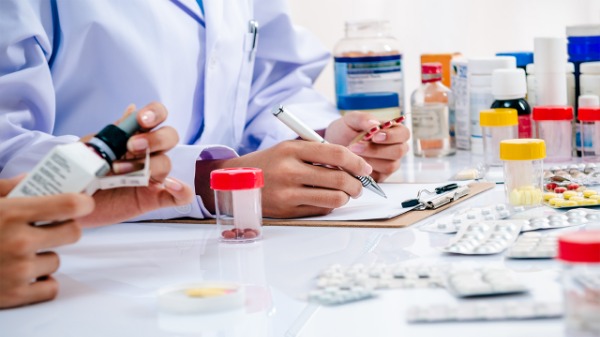Teach You a Trick to Diagnose AIDS

HIV-1 and HIV-2 are two types of human immunodeficiency virus that can cause acquired immunodeficiency syndrome (AIDS). AIDS is a chronic, life-threatening condition that damages the immune system and makes it difficult for the body to fight off infections.
There is no cure for AIDS, but there are treatments that can help people manage the condition and live longer, healthier lives. Early diagnosis and treatment of HIV-1 and HIV-2 are important for preventing the development of AIDS.
Symptoms of HIV-1 and HIV-2
The symptoms of HIV-1 and HIV-2 can vary from person to person. Some people may experience only mild symptoms, while others may develop severe symptoms that can be life-threatening.
The early symptoms of HIV-1 and HIV-2 can include:
Fever
Chills
Muscle aches
Joint pain
Fatigue
Swollen lymph nodes
Rash
Sore throat
As the infection progresses, people with HIV-1 and HIV-2 may develop more severe symptoms, such as:
Weight loss
Diarrhea
Night sweats
Fatigue
Opportunistic infections
Kaposi's sarcoma
Dementia
Diagnosis of HIV-1 and HIV-2
HIV-1 and HIV-2 are diagnosed with a blood test. The blood test can detect the presence of antibodies to HIV-1 or HIV-2 in the blood. Antibodies are proteins that are produced by the immune system in response to infection.
If the blood test is positive for HIV-1 or HIV-2, the doctor will recommend a second test to confirm the diagnosis. The second test may be a Western blot test or an HIV-1 RNA test.
The Western blot test is a more specific test than the blood test. It can identify the specific proteins that are associated with HIV-1 or HIV-2 infection.
The HIV-1 RNA test measures the amount of HIV-1 RNA in the blood. HIV-1 RNA is the genetic material of the virus. A higher level of HIV-1 RNA in the blood is associated with a more severe infection.
Treatment of HIV-1 and HIV-2
There is no cure for HIV-1 or HIV-2, but there are treatments that can help people manage the condition and live longer, healthier lives.
The treatment for HIV-1 and HIV-2 involves taking antiretroviral therapy (ART). ART is a combination of drugs that work to suppress the virus and prevent it from replicating.
ART can reduce the amount of HIV-1 or HIV-2 in the blood to undetectable levels. This can help to prevent the development of AIDS and other complications of HIV-1 or HIV-2 infection.
ART is a lifelong treatment. People with HIV-1 or HIV-2 need to take their medications every day as prescribed by their doctor.
Prevention of HIV-1 and HIV-2
There are a number of ways to prevent HIV-1 and HIV-2 infection, including:
Using condoms during sex
Not sharing needles or other drug paraphernalia
Getting tested for HIV-1 and HIV-2 if you are at risk for infection
Taking pre-exposure prophylaxis (PrEP) if you are at high risk for HIV-1 infection
PrEP is a medication that can help to prevent HIV-1 infection in people who are at high risk for infection. PrEP is taken once a day, and it can reduce the risk of HIV-1 infection by up to 99%.
Outlook for people with HIV-1 and HIV-2
The outlook for people with HIV-1 and HIV-2 has improved significantly in recent years. With early diagnosis and treatment, people with HIV-1 and HIV-2 can live longer, healthier lives.
However, HIV-1 and HIV-2 are still serious infections. People with HIV-1 and HIV-2 need to take their medications as prescribed by their doctor and follow their doctor's instructions carefully.
How to Diagnose AIDS
AIDS is a chronic, life-threatening condition that damages the immune system and makes it difficult for the body to fight off infections. It is caused by the human immunodeficiency virus (HIV).
There is no cure for AIDS, but there are treatments that can help people manage the condition and live longer, healthier lives. Early diagnosis and treatment of HIV is important for preventing the development of AIDS.
The symptoms of AIDS can vary from person to person. Some people may experience only mild symptoms, while others may develop severe symptoms that can be life-threatening.
The early symptoms of AIDS can include:
Fever
Chills
Muscle aches
Joint pain
Fatigue
Swollen lymph nodes
Rash
Sore throat
As the infection progresses, people with AIDS may develop more severe symptoms, such as:
Weight loss
Diarrhea
Night sweats
Fatigue
Opportunistic infections
Kaposi's sarcoma
Dementia
AIDS is diagnosed with a blood test. The blood test can detect the presence of antibodies to HIV in the blood. Antibodies are proteins that are produced by the immune system in response to infection.
If the blood test is positive for HIV, the doctor will recommend a second test to confirm the diagnosis. The second test may be a Western blot test or an HIV RNA test.
The Western blot test is a more specific test than the blood test. It can identify the specific proteins that are associated with HIV infection.
The HIV RNA test measures the amount of HIV RNA in the blood. HIV RNA is the genetic material of the virus. A higher level of HIV RNA in the blood is associated with a more severe infection.
If the second test is also positive, the person is diagnosed with AIDS.
Treatment for AIDS
There is no cure for AIDS, but there are treatments that can help people manage the condition and live longer, healthier lives.
The treatment for AIDS involves taking antiretroviral therapy (ART). ART is a combination of drugs that work to suppress the virus and prevent it from replicating.
ART can reduce the amount of HIV in the blood to undetectable levels. This can help to prevent the development of AIDS and other complications of HIV infection.
ART is a lifelong treatment. People with AIDS need to take their medications every day as prescribed by their doctor.
Prevention of AIDS
There are a number of ways to prevent HIV infection, including:
Using condoms during sex
Not sharing needles or other drug paraphernalia
Getting tested for HIV if you are at risk for infection
Taking pre-exposure prophylaxis (PrEP) if you are at high risk for HIV infection
PrEP is a medication that can help to prevent HIV infection in people who are at high risk for infection. PrEP is taken once a day, and it can reduce the risk of HIV infection by up to 99%.
The above is all the content that the editor wants to share with you. I sincerely hope that these contents can bring some help to your life and health, and I also wish that your life will be happier and happier.
Topic: #trick #you #teach












